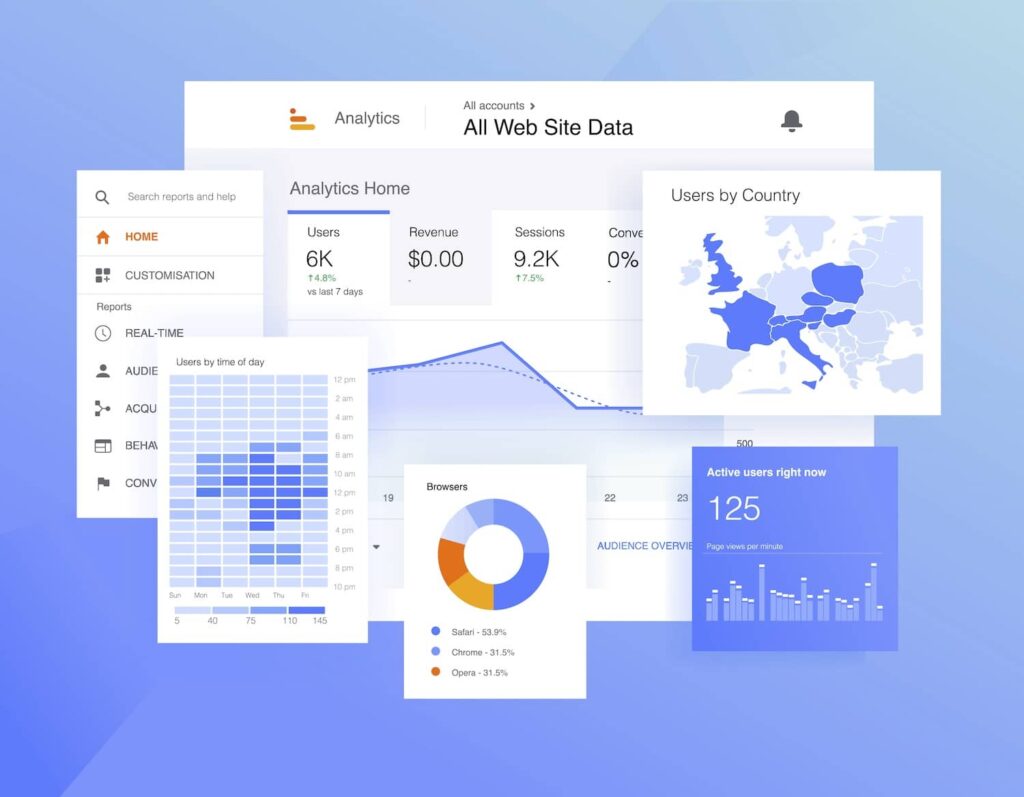Optimizing Your Data Interpretation With Additional Dimension in Google Analytics for Informed Decision-Making
In the world of digital analytics, the capability to remove meaningful insights from information is extremely important for making educated choices that drive organization success. Google Analytics, a powerful device in the hands of digital online marketers and experts, provides an attribute recognized as Secondary Measurement. This often-underutilized feature has the possible to discover a wealth of details that can provide a deeper understanding of user habits and web site efficiency. By tapping right into the capacities of Second Dimension, users can gain a more comprehensive view of their data, allowing them to make calculated decisions based on a much more detailed and nuanced evaluation.
Recognizing Secondary Dimension Capability
Understanding the additional measurement capability in Google Analytics boosts the deepness of data analysis by giving extra context to key metrics. By including an additional dimension, experts can segment and compare information, gaining insights that would certainly otherwise stay concealed. This function permits customers to check out data through various lenses, such as the resource of traffic, customer behavior, or geographical place, using an extra extensive understanding of website performance.
When looking entirely at key metrics,Using second measurements can reveal patterns and connections that might not be noticeable. Pairing the key metric of web page views with an additional dimension like gadget classification can discover whether particular gadgets drive more web traffic to particular pages. This details can after that educate internet site optimization strategies customized to different tool customers.
Implementing Second Measurement in Reports
Building upon the understandings gained through second dimension evaluation, integrating these dimensions properly right into records in Google Analytics is essential for drawing out workable data-driven decisions. what is a secondary dimension in google analytics. By carrying out secondary dimensions in records, individuals can dig much deeper into the performance metrics of their internet site or app. This attribute permits a much more thorough evaluation by offering additional context to the primary measurement chosen
To apply a secondary dimension in records, simply browse to the preferred report in Google Analytics and click the "Additional measurement" tab situated above the data table. From there, individuals can pick from a wide variety of additional dimensions such as 'Source/Medium', 'Tool Category', or 'Landing Web page'. Picking one of the most pertinent secondary measurement will certainly depend upon the details insights you are looking for to reveal.
Using secondary measurements in records not only boosts the depth of evaluation however also aids in recognizing patterns, patterns, and relationships that might have otherwise gone unnoticed. This tactical approach to data interpretation enables organizations to make informed choices that drive development and success.

Studying Data With Secondary Measurements
Upon integrating secondary dimensions into information evaluation within Google Analytics, a thorough exam of key efficiency indications can be accomplished, offering useful insights for strategic decision-making. By using secondary dimensions, experts can further study their main information dimensions, such as website traffic sources or individual demographics, to reveal patterns or trends that might not be immediately noticeable. This deeper level of analysis permits a more extensive understanding of customer habits and interactions on a site or electronic system.
Assessing information with additional dimensions allows marketing professionals and internet site owners to address even more details concerns about their target market, content efficiency, and advertising and marketing efforts. For example, by incorporating the key dimension of website traffic sources with an additional dimension like geographical area, companies can identify which regions drive the most useful traffic to their website. This sort of granular insight can educate marketing strategies, web content her explanation creation, and website optimization efforts to much better provide to the needs and choices of their target audience.
Leveraging Additional Dimensions for Insights
By integrating additional measurements efficiently, experts can draw out deeper insights from information sets in Google Analytics, enhancing the understanding of customer actions and performance metrics. Leveraging secondary measurements entails combining different qualities or metrics with key data to discover patterns and trends that might not appear in the beginning look. For example, by including a secondary measurement such as 'Tool Category' to a report on internet site traffic, experts can recognize whether user behavior varies across different tools like desktops, cellphones, or tablet computers.
Furthermore, using second measurements allows experts to section information much more granularly, enabling them to identify certain target market sectors or geographical locations that exhibit distinct actions. what is a secondary dimension in google analytics. This segmentation can be critical in customizing advertising strategies, maximizing internet site content, or enhancing customer experience based upon the distinct features of each sector
In significance, leveraging secondary dimensions in Google Analytics equips analysts to dig deeper right into data, derive meaningful insights, and make notified decisions that drive service development and success.
Enhancing Decision-Making With Additional Dimensions
Utilizing secondary dimensions in data analysis provides a strategic advantage by revealing workable insights that drive informed decision-making in Google Analytics. By enhancing decision-making via additional dimensions, individuals can dig deeper right into their data to extract valuable details that may not be instantly obvious. These extra dimensions supply a more comprehensive view of individual actions, communications, and results, enabling experts to make even more educated decisions based on concrete data.
Through the utilization of additional dimensions, analysts can segment and filter information to identify patterns, fads, and connections that might affect check this decision-making processes. This enhanced level of granularity enables for an extra targeted strategy to assessing data, leading to more accurate and informative final thoughts.
Additionally, second dimensions supply the hop over to here opportunity to contrast different data factors side by side, helping with a more detailed examination of efficiency metrics and KPIs. By leveraging secondary dimensions properly, organizations can enhance their methods, enhance customer experiences, and ultimately achieve their objectives with confidence.
Final Thought

Building upon the insights gotten with secondary dimension evaluation, integrating these dimensions effectively into reports in Google Analytics is vital for removing actionable data-driven choices.To carry out a second dimension in records, simply navigate to the wanted record in Google Analytics and click on the "Additional measurement" tab located over the information table. By using second measurements, analysts can further dissect their key information dimensions, such as website traffic sources or user demographics, to discover patterns or patterns that may not be promptly evident. By integrating the primary dimension of traffic sources with a second dimension like geographical location, organizations can recognize which areas drive the most beneficial traffic to their site.By integrating second measurements properly, experts can remove much deeper insights from information sets in Google Analytics, boosting the understanding of user behavior and performance metrics.